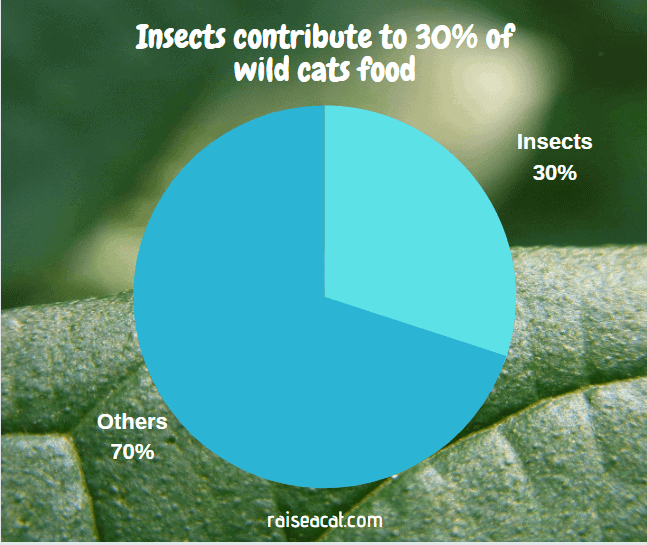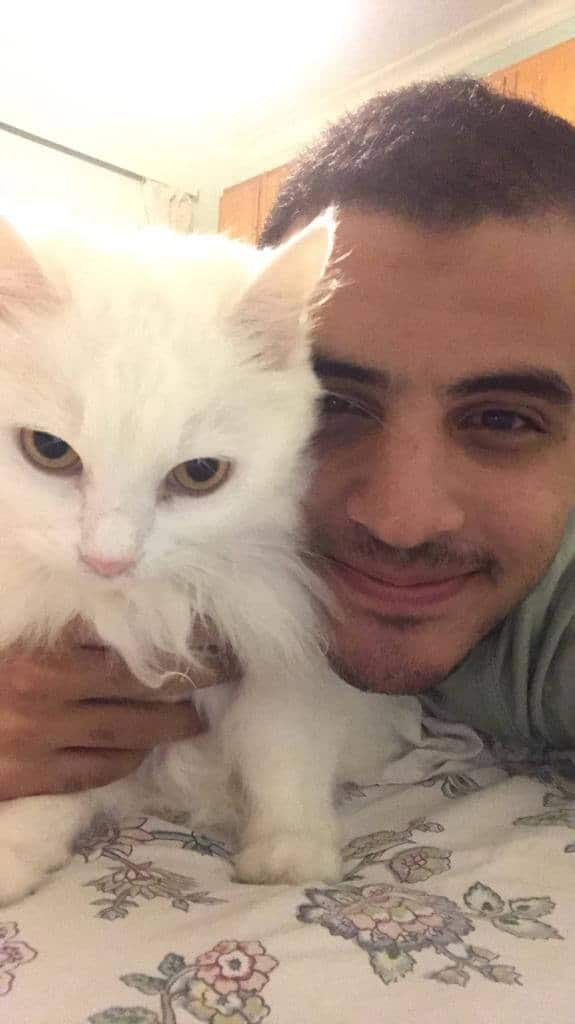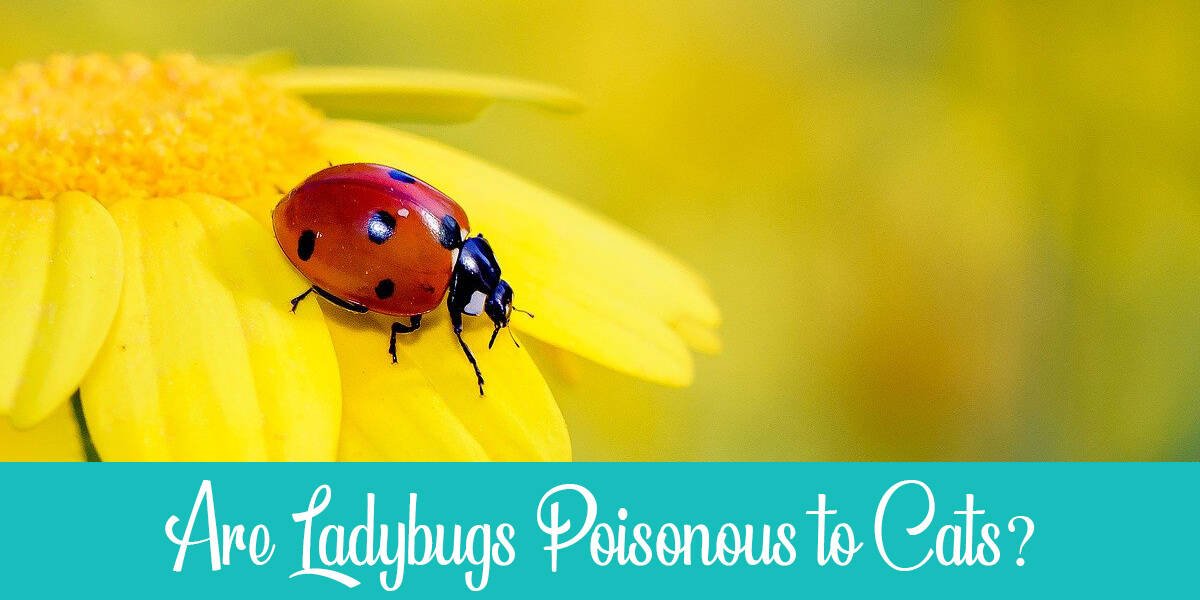Cats usually like chasing insects and flies and maybe even eating them sometimes. This is mainly because they’re natural hunters that enjoy the chase. Many insects are harmless to cats, however, some can be poisonous or cause gastrointestinal issues.
Ladybugs belong to the family of Coccinellidae, which is a family of small beetles. They usually attract cats to chase and eat them. Have you ever caught your cat chasing ladybugs in your garden and eating them. It’s very common, the question is are ladybugs poisonous to cats?
Table of Contents
Are Ladybugs Poisonous to Cats?
Generally, ladybugs are considered harmless to cats. Unlike other bugs, such as lovebugs, spiders, and fireflies, ladybugs won’t cause any immediate health risks for your cat.
Most species of ladybugs aren’t poisonous or toxic to cats. However, they produce bad-smelling secretions that taste horrible to discourage preying animals to feed on them. This is their defensive mechanism to prevent cats and other animals from attacking and eating them in the wild.
Also, consuming insects and flies in general increases the risk of getting Gastrointestinal parasitism. This is a common problem in cats. The occurrence rates may reach 45% in some areas.
This usually happens if ladybugs and/or insects are consumed in very large quantities.
Ulceration, bloodstained diarrhea, vomiting are the most common symptoms of gastroenteritis are all possible side effects of consuming too many ladybugs.
This means that they aren’t toxic or poisonous, but they may cause health issues to our cats, especially if they eat too many of them.
However, there’s a similar bug known as the Asian lady beetle. It looks very similar to the ladybug and is dangerous if consumed by cats. They might cause allergies or infections that need to be treated with antibiotics. That’s why you need to watch out if your cat isn’t willing to eat, as this is the main symptom that it might have a bacterial infection from consuming this bug.
What Do Cats Eat in the Wild?

Cats have a great sense of hearing and vision, which enhances their ability to detect motion. Whenever they hear a sound that indicates the presence of a possible prey, they turn into hunters and start pursuing this prey.
When cats are in the wild, they usually prefer to eat up to 15 meals per day. These meals are of very small quantity. They like the idea that they hunt for their own food. That’s why most of their meals are composed of things available in the wild for hunting.
Cats feed on a variety of things in the wild such as:
- Small rodents and birds: such as rats and rabbits as well as sparrows and robins. Also, moles, squirrels, and bats are frequently eaten by cats.
- Insects and reptiles: insects contribute to almost 30% of their food. Ladybird beetles are one of the most consumed insects.
Related: Are lupins poisonous to cats?
What Attracts House Ladybugs?

If you think that ladybugs are a good way to protect your garden from some pests, you need to understand what attracts ladybugs.
Ladybugs are always attracted to flowers and plants as they eat the plants’ pollen grains. That’s why if you want to attract them into your garden, make sure you plant some of these flowers.
Dahlias and daisies and many others will be your choice of plants to make sure ladybugs enjoy their stay there and protect your other plants against pests.
You can also provide a nice house for the ladybugs which will attract them to stay in your garden. A ladybug house is usually a small wooden box filled with wooden pieces like bamboo canes.
How to Get Rid of Ladybugs?
If Ladybugs always sneak into your house, you may suffer from them biting or even causing stomach problems to your cats. Using indoor insecticides isn’t very effective to remove them from your home.
That’s why it is important to prevent their entrance in the first place. Make sure that your doors and windows are equipped with proper sealing with no spaces that bugs can pass through. This will close all openings through which they can enter your home.
If they already entered your home and you want to get rid of them you can try out some of these tricks.
Starting with the obvious, a potent residual insecticide can get the job done and save you time and effort. Something like Suspend SC contact insecticide would work efficiently.
Another way to go is to use natural remedies, and there’s plenty of them. Most of them work on the principle that ladybugs hate odors. Hence, they use natural stuff with strong smells to drive them away.
To do this, you can apply clove oil, citrus oil, orange oil, or lemongrass, at the places where ladybugs are active, or at the spots where you’re anticipating them. The odor should get rid of them. While we’re at it, sealing off the gaps of doors and windows and/or spraying them with pesticides can help with the process. You can use caulk or any other sealant of your choice.
If you don’t want to harm them, but rather repel them. You can plant some lavender. Not only does it smell and look good, but lavender is rather a natural pesticide.
Finally, if you like to invest some time in making a small DIY project, you can make a light trap for them. This is a safe and clean way to rid your home of ladybugs. Here’s a nice tutorial on how to set a trap, or you can buy one.
Final Thoughts
There are many species of Ladybugs and most of them aren’t dangerous if consumed by your cats. Even though Ladybugs are not poisonous to cats, it might be better if you keep them out of your house.
They may be beneficial for your garden to keep some dangerous pests away, but when they get into the house they bite and it’s very hard for them to leave. Try out some of our recommended remedies and share with us any other tips you have to keep ladybugs away!

I’ve been living with cats since 2008 and I can confidently say I have more feline friends than humans lol. I currently live with 5 cats in different life stages; two of them are less than one year old, one is 2-ish years old and the oldest two are 9-ish years old. I’ve developed a strong bond with cats over the years and I’m eager to share my experience through this blog. You can learn more about my cats here.

